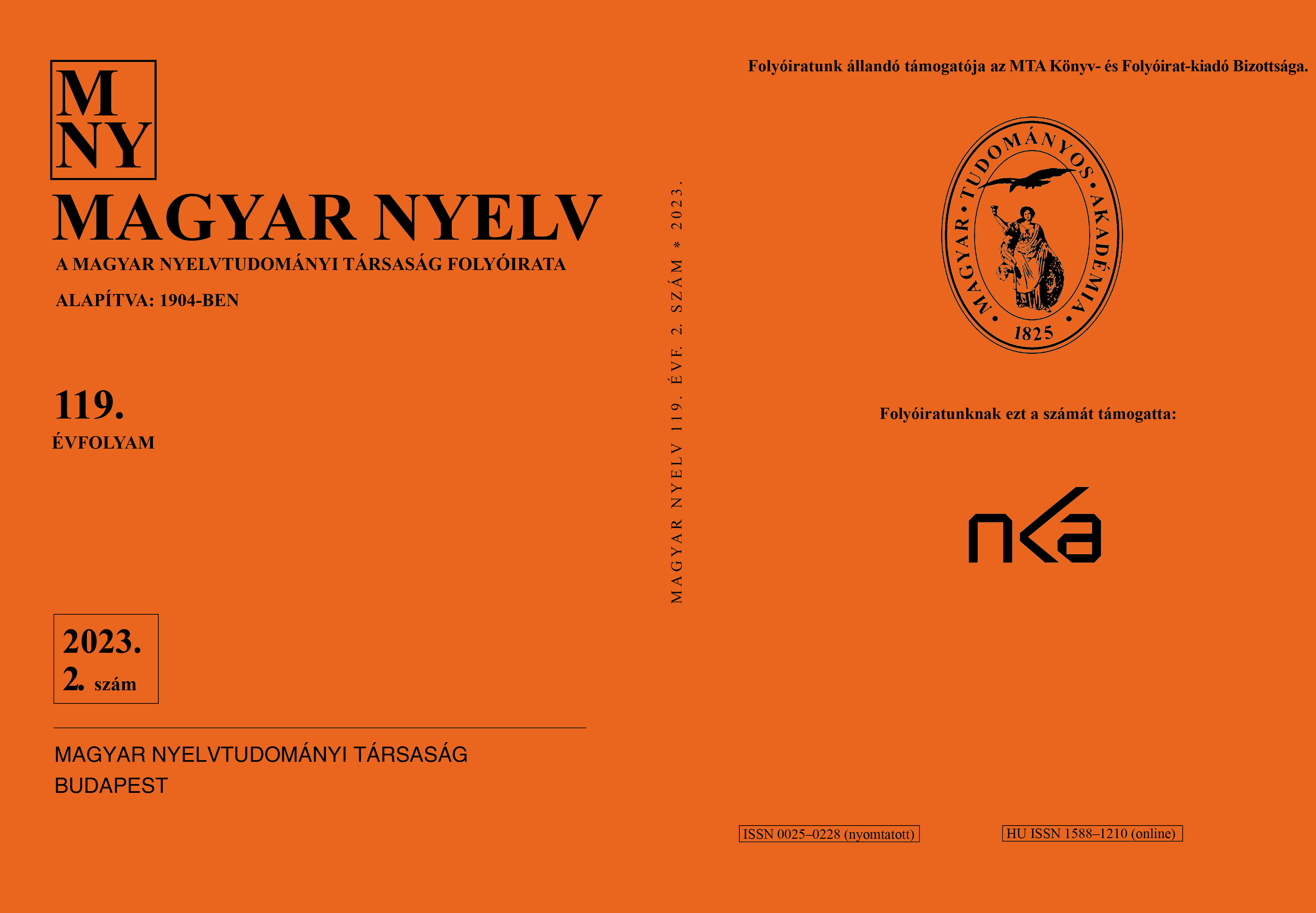Relationships between orality and literacy in Old Hungarian
DOI:
https://doi.org/10.18349/MagyarNyelv.2023.2.153Keywords:
orality, literacy, Old Hungarian script, charters, first Hungarian textsAbstract
The purpose of the present paper is to discuss a topic for which extant Hungarian manuscripts from the 11th–13th centuries cannot give much guidance at first glance, but comprehensive works and specialized papers from a variety of scientific disciplines could provide a good starting point. The first question that arises is related to the beginnings of Hungarian literacy. It is important to note that a Hungarian writing system of steppe-based origin – the so-called Old Hungarian script – existed before the adaptation of the Latin alphabet, since the 10th century. This system is preserved in the form of runic inscriptions in Transylvanian churches. An essential question on the language use of the Middle Ages is the inseparable relation between Hungarian orality and Latin literacy. This duplicity was especially present in charter writing, where the isolated use of Hungarian toponyms in charters written in Latin required some unique solutions. Regarding the oldest texts written in Hungarian (Funeral Sermon, Lamentations of Mary), a key element is the fact that these texts were not translations but adaptations of their Latin originals, pointing to a long practice of oral interpreting. The impact of the Lamentations of Mary persisted on the level of orality for centuries, in the form of archaic folk prayers.
Downloads
Published
Issue
Section
License
Copyright (c) 2023 Klára Korompay

This work is licensed under a Creative Commons Attribution-NonCommercial-NoDerivatives 4.0 International License.
Magyar Nyelv is a Diamond Open Access periodical. Documents can be freely downloaded and duplicated in an electronic format, and can be used unchanged and with due reference to the original source. Such use must not serve commercial purposes. In the case of any form of dissemination and use, Hungarian Copyright Act LXXVI/1999 and related laws are to be observed. The electronic version of the journal is subject to the regulations of CC BY-NC-ND (Creative Commons – Attribution-NonCommercial-NoDerivatives).
The journal permits its authors, at no cost and without any temporal limitation, to make pre-print copies of their manuscripts publicly available via email or in their own homepage or that of their institution, or in either closed or free-for-all repositories of their institutions/universities, or other non-profit websites, in the form accepted by the journal editor for publication and even containing amendments on the basis of reviewers’ comments. When the authors publicize their papers in this manner, they have to warn their readers that the manuscript at hand is not the final published version of the work. Once the paper has been published in a printed or online form, the authors are allowed (and advised) to use that (post-print) version for the above purposes. In that case, they have to indicate the exact location and other data of the journal publication. The authors retain the copyright of their papers; however, in the case of an occasional secondary publication, the bibliographical data of the first publication have to be included.



